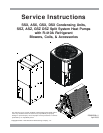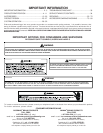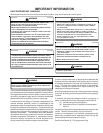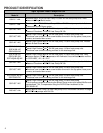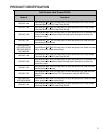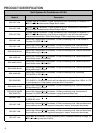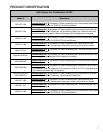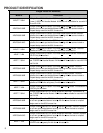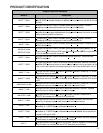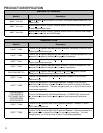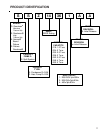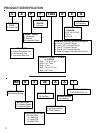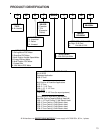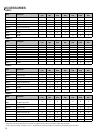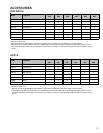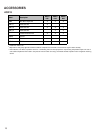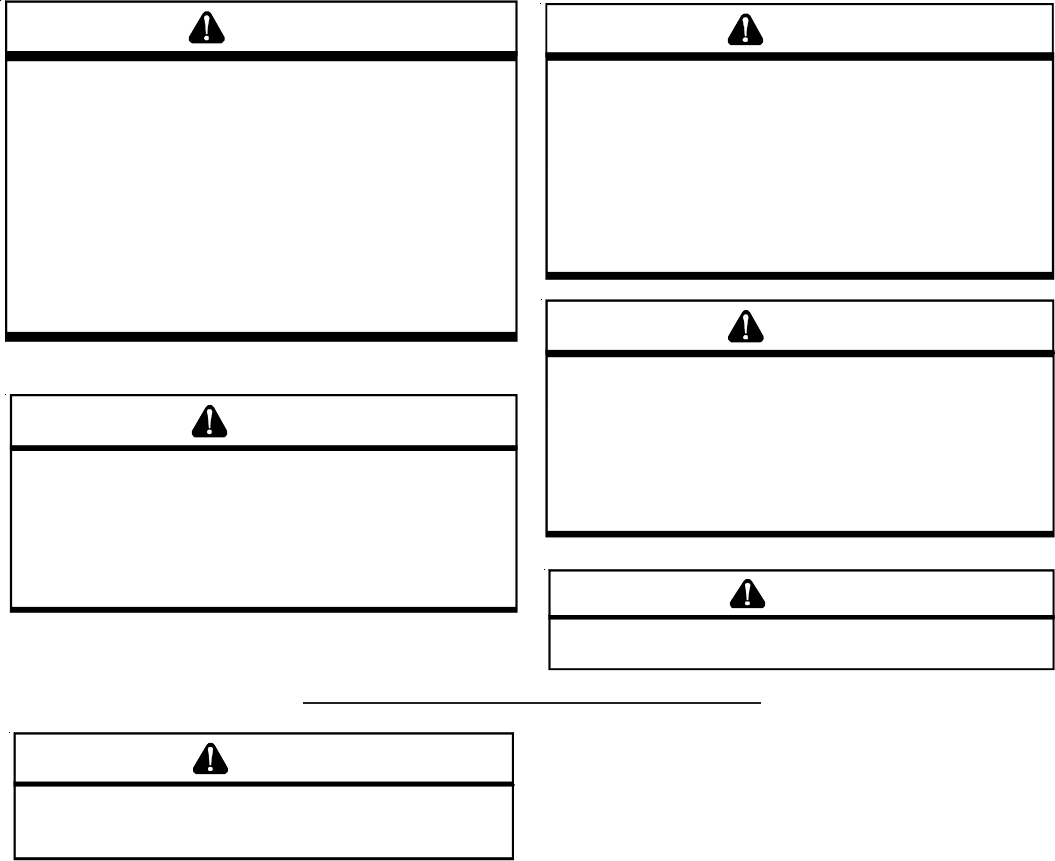
SAFE REFRIGERANT HANDLING
While these items will not cover every conceivable situation, they should serve as a useful guide.
IMPORTANT INFORMATION
The successful development of hermetically sealed refrigera-
tion compressors has completely sealed the compressor's
moving parts and electric motor inside a common housing,
minimizing refrigerant leaks and the hazards sometimes
associated with moving belts, pulleys or couplings.
Fundamental to the design of hermetic compressors is a
method whereby electrical current is transmitted to the
compressor motor through terminal conductors which pass
through the compressor housing wall. These terminals are
sealed in a dielectric material which insulates them from the
housing and maintains the pressure tight integrity of the
hermetic compressor. The terminals and their dielectric
embedment are strongly constructed, but are vulnerable to
careless compressor installation or maintenance proce-
dures and equally vulnerable to internal electrical short
circuits caused by excessive system contaminants.
In either of these instances, an electrical short between the
terminal and the compressor housing may result in the loss
of integrity between the terminal and its dielectric embed-
ment. This loss may cause the terminals to be expelled,
thereby venting the vaporous and liquid contents of the
compressor housing and system.
A venting compressor terminal normally presents no danger
to anyone, providing the terminal protective cover is properly
in place.
If, however, the terminal protective cover is not properly in
place, a venting terminal may discharge a combination of
(a) hot lubricating oil and refrigerant
(b) flammable mixture (if system is contaminated
with air)
in a stream of spray which may be dangerous to anyone in the
vicinity. Death or serious bodily injury could occur.
Under no circumstances is a hermetic compressor to be
electrically energized and/or operated without having the
terminal protective cover properly in place.
See Service Section S-17 for proper servicing.
WARNING
REFRIGERANTS ARE HEAVIER THAN AIR. THEY CAN "PUSH OUT" THE
OXYGEN IN YOUR LUNGS OR IN ANY ENCLOSED SPACE.
T
O AVOID
POSSIBLE DIFFICULTY IN BREATHING OR DEATH:
•
N
EVER PURGE REFRIGERANT INTO AN ENCLOSED ROOM OR SPACE.
B
Y
LAW, ALL REFRIGERANTS MUST BE RECLAIMED.
•
IF AN INDOOR LEAK IS SUSPECTED, THOROUGHLY VENTILATE THE AREA
BEFORE BEGINNING WORK.
•
L
IQUID REFRIGERANT CAN BE VERY COLD.
T
O AVOID POSSIBLE FROST-
BITE OR BLINDNESS, AVOID CONTACT WITH REFRIGERANT AND WEAR
GLOVES AND GOGGLES.
I
F LIQUID REFRIGERANT DOES CONTACT YOUR
SKIN OR EYES, SEEK MEDICAL HELP IMMEDIATELY.
•
A
LWAYS FOLLOW
EPA
REGULATIONS.
N
EVER BURN REFRIGERANT,
AS POISONOUS GAS WILL BE PRODUCED.
WARNING
SYSTEM CONTAMINANTS, IMPROPER SERVICE PROCEDURE AND/OR PHYSICAL
ABUSE AFFECTING HERMETIC COMPRESSOR ELECTRICAL TERMINALS MAY
CAUSE DANGEROUS SYSTEM VENTING.
WARNING
T
O AVOID POSSIBLE INJURY, EXPLOSION OR DEATH, PRACTICE SAFE
HANDLING OF REFRIGERANTS.
WARNING
TO AVOID POSSIBLE EXPLOSION, USE ONLY RETURNABLE (NOT DISPOSABLE)
SERVICE CYLINDERS WHEN REMOVING REFRIGERANT FROM A SYSTEM.
•
ENSURE THE CYLINDER IS FREE OF DAMAGE WHICH COULD LEAD TO A
LEAK OR EXPLOSION.
•
ENSURE THE HYDROSTATIC TEST DATE DOES NOT EXCEED 5 YEARS.
•
ENSURE THE PRESSURE RATING MEETS OR EXCEEDS 400 LBS.
WHEN IN DOUBT, DO NOT USE CYLINDER.
WARNING
TO AVOID POSSIBLE EXPLOSION:
•
N
EVER APPLY FLAME OR STEAM TO A REFRIGERANT CYLINDER.
I
F YOU
MUST HEAT A CYLINDER FOR FASTER CHARGING, PARTIALLY IMMERSE
IT IN WARM WATER.
•
NEVER FILL A CYLINDER MORE THAN 80% FULL OF LIQUID REFRIGERANT.
•
NEVER ADD ANYTHING OTHER THAN R-22 TO AN R-22 CYLINDER OR
R-410A TO AN R-410A CYLINDER. THE SERVICE EQUIPMENT USED MUST
BE LISTED OR CERTIFIED FOR THE TYPE OF REFRIGERANT USED.
•
S
TORE CYLINDERS IN A COOL, DRY PLACE.
N
EVER USE A CYLINDER
AS A PLATFORM OR A ROLLER.
WARNING
T
HE
U
NITED
S
TATES
E
NVIRONMENTAL
P
ROTECTION
A
GENCY ("
EPA
")
HAS ISSUED VARIOUS REGULATIONS REGARDING THE INTRODUCTION AND
DISPOSAL OF REFRIGERANTS INTRODUCED INTO THIS UNIT.
F
AILURE TO
FOLLOW THESE REGULATIONS MAY HARM THE ENVIRONMENT AND CAN
LEAD TO THEH IMPOSITION OF SUBSTANTIAL FINES.
THESE REGULATIONS
MAY VARY BY JURISDICTION.
SHOULD QUESTIONS ARISE, CONTACT YOUR
LOCAL
EPA OFFICE.



